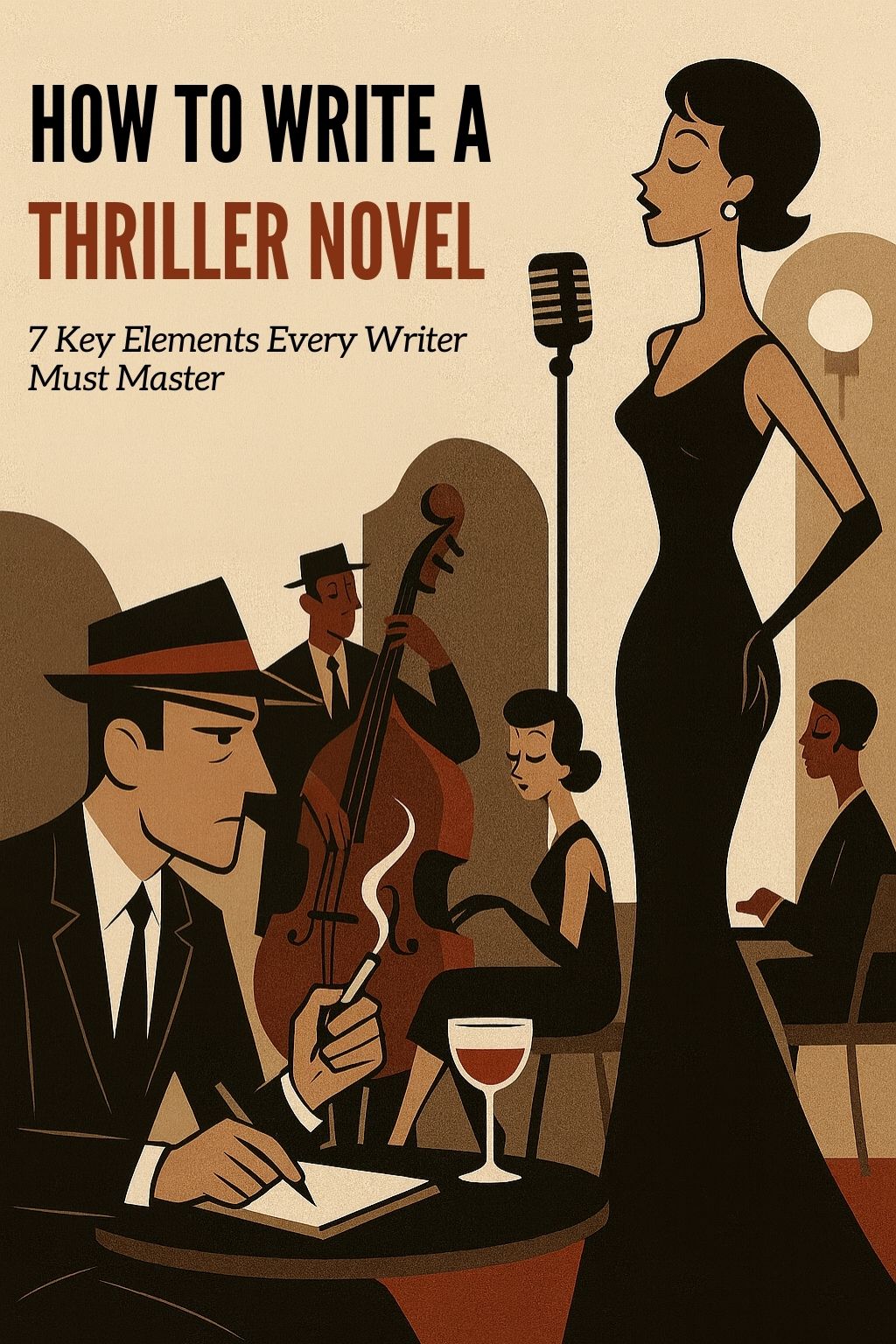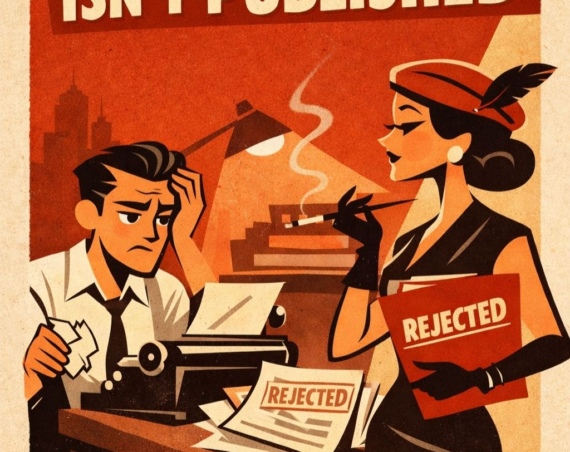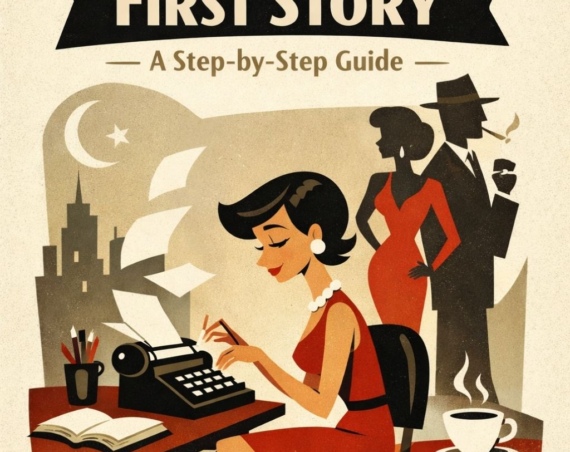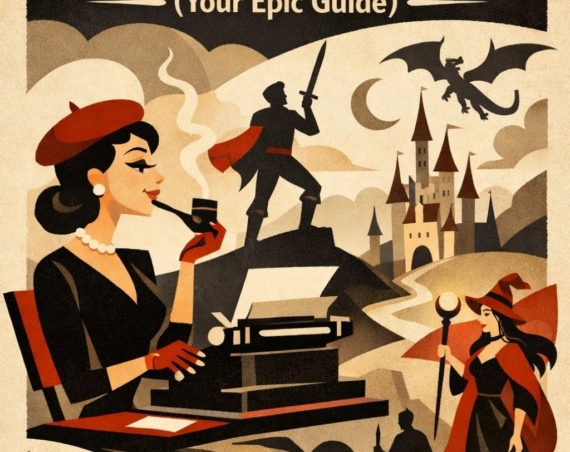If you’ve ever turned the last page of a thriller, heart pounding, palms sweating, and thought “I want to write something like that,” you’re in the right place. Writing a thriller novel isn’t just about car chases and dark secrets—it’s about tension, clever heroes, dangerous villains, and a constant sense of what happens next?
In this post, we’ll explore how to write a thriller novel using seven key elements—what author James Frey (in How to Write a Damn Good Thriller) calls the “Seven Pillars” of a great thriller. Whether you’re outlining your first story or refining your latest manuscript, mastering these will make your readers stay up way past their bedtime.
1. Understand What Makes a Thriller Tick
Before diving into the seven elements, let’s define the genre. According to Frey, a thriller is a story where a clever hero must foil evil. The key word here is clever. In thrillers, readers don’t just want brute strength—they want wit, resourcefulness, and intelligence. The thrill lies in watching the protagonist outsmart the villain.
Think about Jason Bourne piecing together his identity, or Clarice Starling using psychology to match wits with Hannibal Lecter. The thrill comes from the mental chess game.
2. High Stakes: Make the Consequences Matter
The first (and perhaps most critical) element of a good thriller is high stakes. Without strong stakes, there’s no tension—and without tension, you don’t have a thriller.
Ask yourself:
- What does the hero stand to gain?
- What does the hero stand to lose?
The stakes can be personal—saving a loved one, protecting a secret—or global—stopping a virus outbreak, preventing nuclear war. The best thrillers combine both. For instance, in Die Hard, John McClane must save his wife (personal stakes) while also stopping terrorists (larger stakes).
To make your story impactful, your reader should feel the weight of what’s at risk on every page.
Pro tip: Up the stakes as the story progresses. Every decision your hero makes should make the cost of failure even higher.
3. Unity of Opposites: Lock Your Characters in Conflict
The second element is unity of opposites—a fancy way of saying your hero and villain are trapped in a conflict they cannot escape.
If your protagonist could simply walk away from the problem, there’s no reason for readers to stay invested. The conflict should be inevitable.
That’s why so many thrillers feature law enforcement officers, spies, or people duty-bound to confront danger. They can’t just leave; it’s their job, or their morality won’t let them.
Even in supernatural thrillers (think haunted house stories), there must be a reason the characters stay in the danger zone. Maybe they can’t leave because the house is cursed, or because a loved one is still trapped inside.
Example: In Silence of the Lambs, Clarice can’t just quit her assignment with Hannibal Lecter—doing so would end her FBI career and allow a killer to remain free. She’s locked in.
This sense of “no escape” keeps the tension alive.
4. Seemingly Impossible Odds: Make the Hero’s Victory Feel Earned
If readers believe your hero can win easily, you’ve lost them. Great thrillers make us believe the hero will fail—even when we secretly know they’ll pull through.
That’s why your villain needs to be truly formidable. The more competent and ruthless the antagonist, the greater the suspense.
In The Dark Knight, for example, Batman faces The Joker—a villain who’s always one step ahead. The Joker doesn’t just threaten lives; he manipulates Batman’s own strengths and morals against him. That’s what makes every confrontation feel unpredictable.
To achieve this:
- Give your villain the upper hand early in the story.
- Let them win small battles.
- Make your protagonist struggle, adapt, and outthink their enemy.
When your hero finally triumphs, it feels hard-earned and deeply satisfying.
5. Moral Struggle: Define Good and Evil (Even in Shades of Gray)
Every great thriller has a moral struggle at its core. It’s not just about stopping the bad guy—it’s about confronting moral boundaries.
Your protagonist should embody “the good,” even if they’re flawed or morally gray. Maybe they’re an antihero—a vigilante, a criminal with a conscience, or a cop who bends the rules—but their actions ultimately serve a greater good.
This moral tension creates emotional depth. Readers aren’t just watching a fight between two people—they’re watching a clash of values.
Example: In Breaking Bad, Walter White’s journey from desperate teacher to ruthless drug lord works as a reverse thriller—because his moral decline is the real ticking clock.
Ask yourself:
- What does your hero believe in?
- How does the villain challenge those beliefs?
Your story’s emotional punch depends on how your characters wrestle with their sense of right and wrong.
6. Ticking Clock: Add Urgency to Every Scene
Few things raise tension like a ticking clock. It’s a classic thriller device for a reason—it creates urgency.
Deadlines force characters (and readers) to stay on edge. Whether it’s an actual timer counting down a bomb or a metaphorical one (a disease spreading, a target escaping), a ticking clock drives momentum.
James Frey gives great examples:
- Deliver the ransom by midnight or your daughter dies.
- Kill all the vampires before sundown or the town is doomed.
Even Brandon McNulty’s own book Entry Wounds uses a literal ticking clock: the protagonist must kill one person each day or lose control of his cursed gun.
Pro tip: You don’t need just one ticking clock—layer them. Maybe the hero has 24 hours to stop the assassin and his personal life is crumbling in the meantime. The more deadlines, the higher the stress.
7. Menace: Let the Villain Deliver on Their Threats
A villain who makes empty threats is boring. In thrillers, menace means your antagonist doesn’t just talk about danger—they prove they’re capable of it.
Show your villain’s ruthlessness early. Let them harm someone, destroy something, or cross a moral line. When readers see what the villain can do, every future threat feels real.
Think of Anton Chigurh from No Country for Old Men. From the moment we see him kill without hesitation, we believe every scene with him could end in death. That’s menace.
Your readers should fear what might happen if the hero fails. That fear fuels suspense.
8. Thriller-Type Characters: Clever Heroes vs. Clever Villains
Thrillers thrive on smart conflict. You need a clever hero and a clever villain.
The joy of a great thriller lies in the back-and-forth—the mental chess match between two brilliant minds. If one side is significantly weaker, the story feels lopsided.
Batman and the Joker. Clarice and Hannibal. Sherlock and Moriarty. Each pair challenges and defines the other.
Your hero should win through intellect, not luck. And your villain should push them to their limits, forcing growth and ingenuity.
Ask yourself:
- How does my hero outsmart the villain?
- How does my villain anticipate and counter the hero’s moves?
This dynamic creates the pulse of your thriller—the constant escalation that keeps readers hooked.
9. Bonus Tip: Pacing and Tension Management
Beyond Frey’s seven pillars, great thrillers live or die by pacing. You can have all the right ingredients, but if the tension flatlines, your readers will drift.
Use these pacing tricks:
- Alternate intensity: Follow high-action scenes with quieter moments of dread or reflection.
- Cliffhangers: End chapters with unresolved questions.
- Multiple POVs: Show what the villain is planning to raise dramatic irony.
- Shorter sentences: In action scenes, use brisk prose to mirror the adrenaline.
Remember, tension isn’t just in explosions—it’s in the pauses before them.
10. Putting It All Together: Building Your Own Thriller
So how do you actually start writing your thriller novel?
Here’s a quick roadmap:
- Start with a hook – A moment that demands attention (a murder, a secret, a shocking revelation).
- Introduce your clever hero – Show what makes them resourceful.
- Present the villain and the threat – Make the menace tangible early on.
- Set the stakes – Clarify what happens if the hero fails.
- Add a ticking clock – Create urgency.
- Escalate the conflict – Raise personal and global stakes in tandem.
- Deliver a payoff – Let your hero triumph through cleverness, not coincidence.
Above all, keep readers emotionally invested. Thrillers aren’t just about danger—they’re about what the danger means to your characters.
Final Thoughts
Writing a thriller novel is like conducting an orchestra of tension—every beat, every pause, every decision builds toward a climactic crescendo. By mastering these seven key elements—high stakes, unity of opposites, impossible odds, moral struggle, ticking clock, menace, and thriller-type characters—you’ll craft stories that make readers’ hearts race and their minds spin.
So go ahead—start outlining your own edge-of-your-seat masterpiece. And remember: in the world of thrillers, cleverness conquers evil every time.




